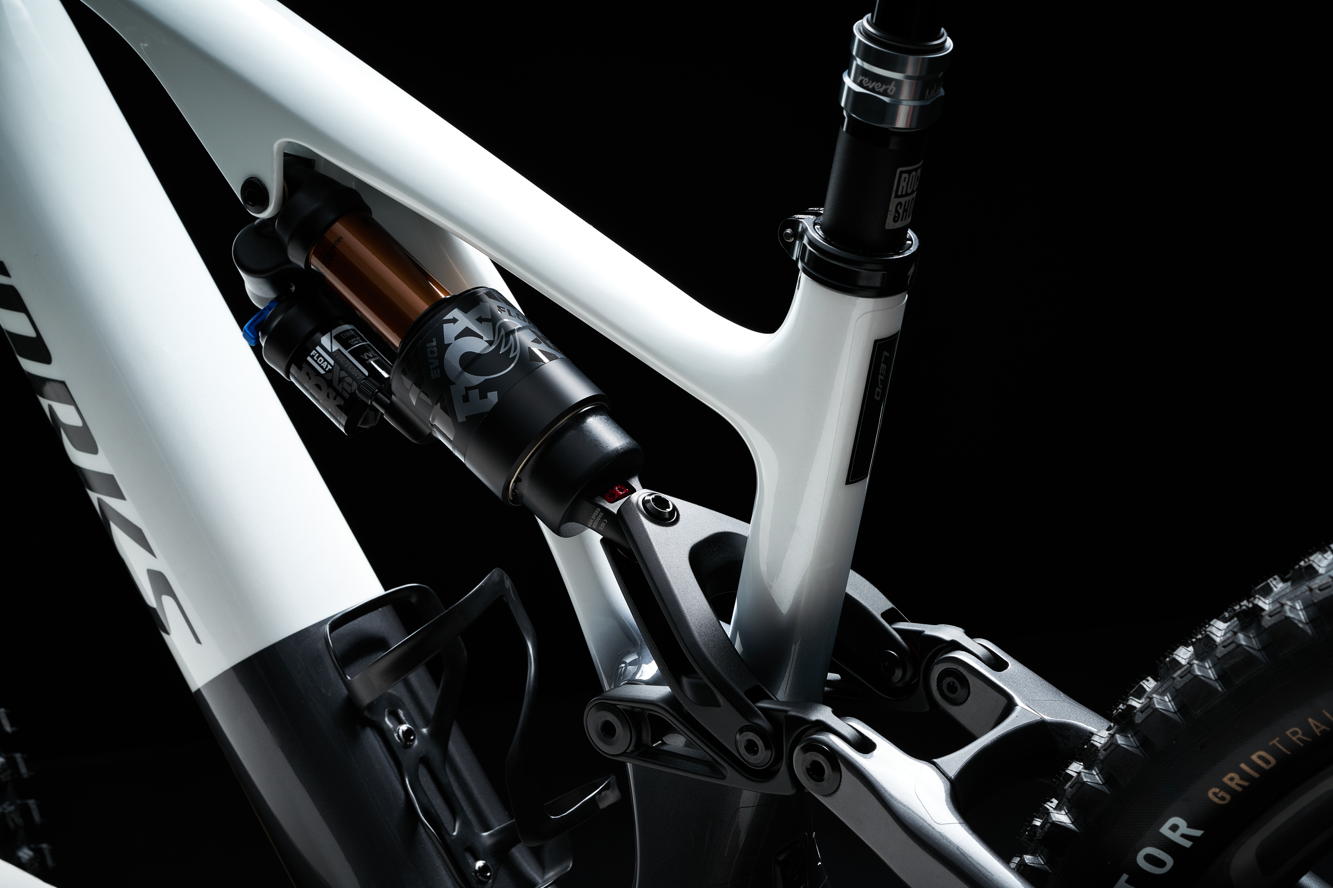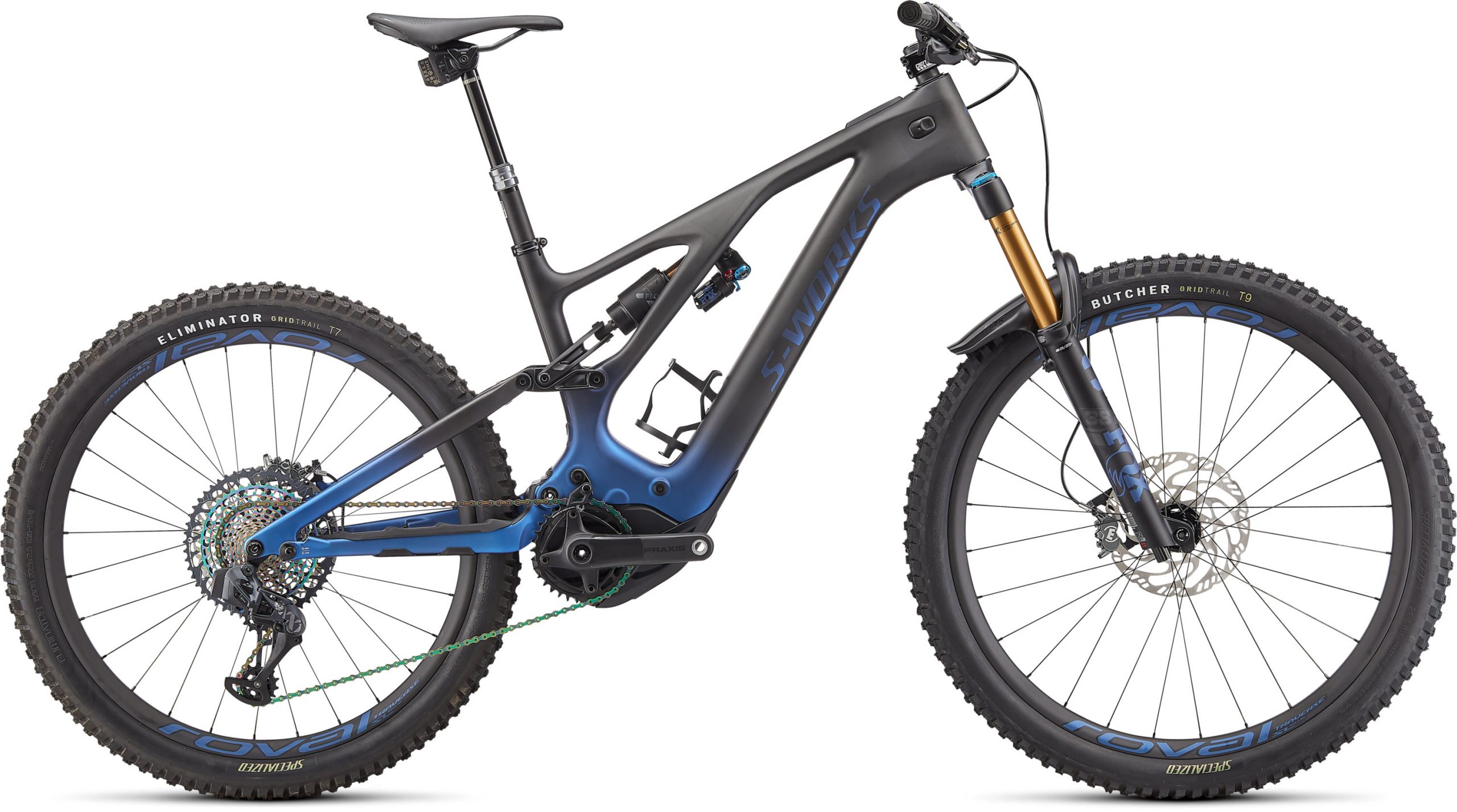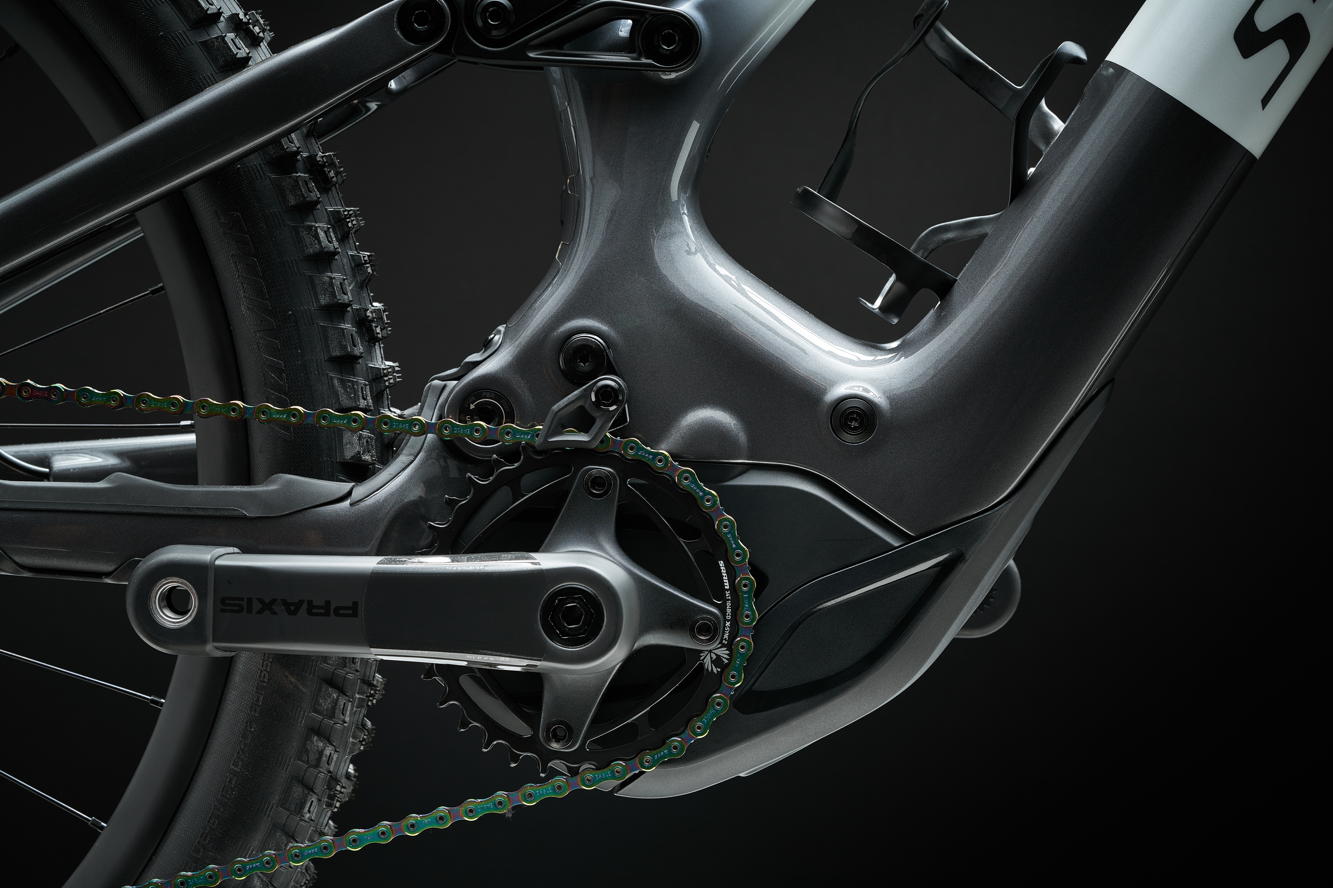Specialized Turbo Levo is now longer, lower and slacker with adjustable geometry and six frame sizes to choose from.
The Specialized Turbo Levo is arguably the most influential e-bike ever made. It wasn’t the first by a long stretch, but it blew the world away with its blend of unmatched power delivery, sheer grunt, big internal battery and sleek integrated design. Now there’s a new third generation bike – it might look like the outgoing model, but peer a little closer and we’re looking at a radically different machine.
Read more: Guide to the best electric mountain bikes

Mixed wheels
What’s changed then? The most obvious shift is that the Levo is now a mullet bike with a 29in front wheel and a 27.5in at the back. The previous generation ran 29in wheels front and rear. And there simply isn’t space back there for a 29in wheel any more – Specialized has shortened the chainstays on the all-new carbon frame by 14mm over the outgoing model. According to Spesh this is the best way to get the bike ride naturally and playfully, get it feeling as close as possible to a normal bike.

Electric Evo
The bike it’s referring to, of course, is the acclaimed Specialized Stumpjumper Evo. Launched at the back end of 2020 it features a radical design with improved standover, expanded S-sizing and multi-function geometry adjust that lets you tweak the head angle and bottom bracket height independently. Just as we recommended in our E-Bike of the Year test of the previous Turbo Levo, the new bike gets the full Evo makeover then, featuring six different geometry settings, with head tube inserts to let you steepen or slacken the head angle from 63-65.5° and a flip-chip at the chainstay Horst pivot to raise or lower the BB by 7mm. And as a Brucie bonus, this also gives some adjustment of chainstay length (around 6mm) – crucial if you want to try and maintain a good weight balance across the new size range. It’s possible to make changes by the trailside if needs be, with just a decent multi-tool. To help make the new Turbo Levo even more accomplished on the climbs, there’s a steeper seat angle too.

S-sizing comes to the Turbo Levo
The second generation Levo had pretty modest geometry compared to the competition, as it neared the end of its life, with a short front end and long back end. The new bike switches that outdated formula around, with a claimed 442mm chainstay, 878mm front centre and a whopping 1,318mm wheelbase on the largest size. Specialized has gone to town on frame sizing, with six frames on offer from S1-S6 – this is a great development because it should let small, medium and large riders have two sizes to pick from, where previously they’d have been pigeonholed into just one. And key to this consumer choice is the decision to trim head tube and seat tube lengths compared to the old model. In the old range, sizing up was restricted by how low you could get your handlebars and saddle height while seeking a longer reach. With a lower front end and shorter seat tube, you can now float between sizes far more easily.


Travel Unchanged
The suspension has changed too, not the travel – it’s still 150mm with a 160mm fork – but all three of the new models feature a Fox X2 shock. There’s also a Fox 38 on the front, a fork that’s rapidly becoming one of the go-to standards for e-bikes. The idea is to mimic the changes Specialized saw customers making to their old Levos, switching up to better damped shocks and burlier forks like the Fox 36. Specialized has significantly beefed up the shock yoke and frame around the stays, too.

Eye-watering prices
The new bike is full carbon, and starts at £8,750 for the Expert, the Pro model costs £10,750 and the S-Works is £13,000 exactly. Yes, you read those prices right. We’re now at a point where entry-level is nearly £9k. Insert grimace emoji. Still, given current demand and scarcity of stock, we wouldn’t bet against the first batch selling out in record time. No word on the alloy version just yet, but prices for that may dip a little closer to the £5k mark.

All the bikes come with 700Wh batteries and SRAM drivetrains, but the Expert uses a blend of X01 and GX with Performance Elite level Fox, the Pro is all X01 and gets Factory suspension, while the S-Works keeps the Fox Factory suspension but steps up to SRAM AXS shifting and RockShox Reverb AXS dropper post. You can now also get the Levo frame only, although that term’s a little redundant here because you actually get the frame, X2 Factory shock motor and 700Wh battery, for £6,500. The top end bikes are available now, with the Expert arriving in April.

The motor – more reliable we’re assured
The new Levo’s Brose motor’s vital statistics haven’t changed, it still offers an impressive 565watt peak power output and 90Nm of torque, but the latest 2.2 version has new firmware to improve the power and efficiency. One of the best things about hopping on the old bike was just how smooth, quiet and natural the assistance felt, with heaps of overrun to help you up the trickiest sections when your legs gave out. Version 2.2 is promised to be smoother still, with a more natural ride feeling, so we’re expecting great things. Not so great was the old bike’s reliability; Specialized says it has upgraded the belt with a reinforced design and protected it from power surges with new firmware. Sealing has been improved too, with a new connector cable with pull-out handle and a separate door which should help prevent water getting at the contacts. The battery is also secured with a new bolt that’s easier to thread into place. These are welcome improvements, but time will tell whether the problems have been cured and consumer faith has been restored.

Mastermind
The Levo of old showed us that switches didn’t have to look ugly and that displays don’t have to protrude out from your bars like a computer. Specialized has suped up this idea with a new colour screen display integrated into the top tube called the MasterMind Turbo Control Unit (TCU). It now has greater functionality to custom tune the power, or personalise what it’s showing you. Spesh says it’s really the brains of the bike rather than a humble display. As such there are over-the-air updates, just like a Tesla, so no need to bother your local dealer if a new version of firmware is released. Also new is a MicroTune feature where you can adjust the assistance in 10% increments to allow you to match the pace of a riding companion – great if you’re mixing analogue and electric, or half-fat e-bike and full-fat e-bike. You can personalise the display to show the information that’s important to you. By default it displays the clock, speed and battery remaining in a percentage. There’s precision elevation tracking with a built-in altimeter, and the internal power meter lets you see how many watts you’re putting out. Last but my no means least, Specialized is touting a feature where you input your ride length or duration and it will meter out the power to make sure you don’t run out of battery.
The first Levo inspired the competition to try harder and do better, so much so that great rivals like Trek, YT and Canyon soon began to eclipse the Levo better-riding e-bikes as the Levo started to show its age. Specialized was never going to take that lying down though, and now the fightback has started. Will riders have the stomach for a bike that costs more than double some of the best e-bikes out there right now? Over to you.




